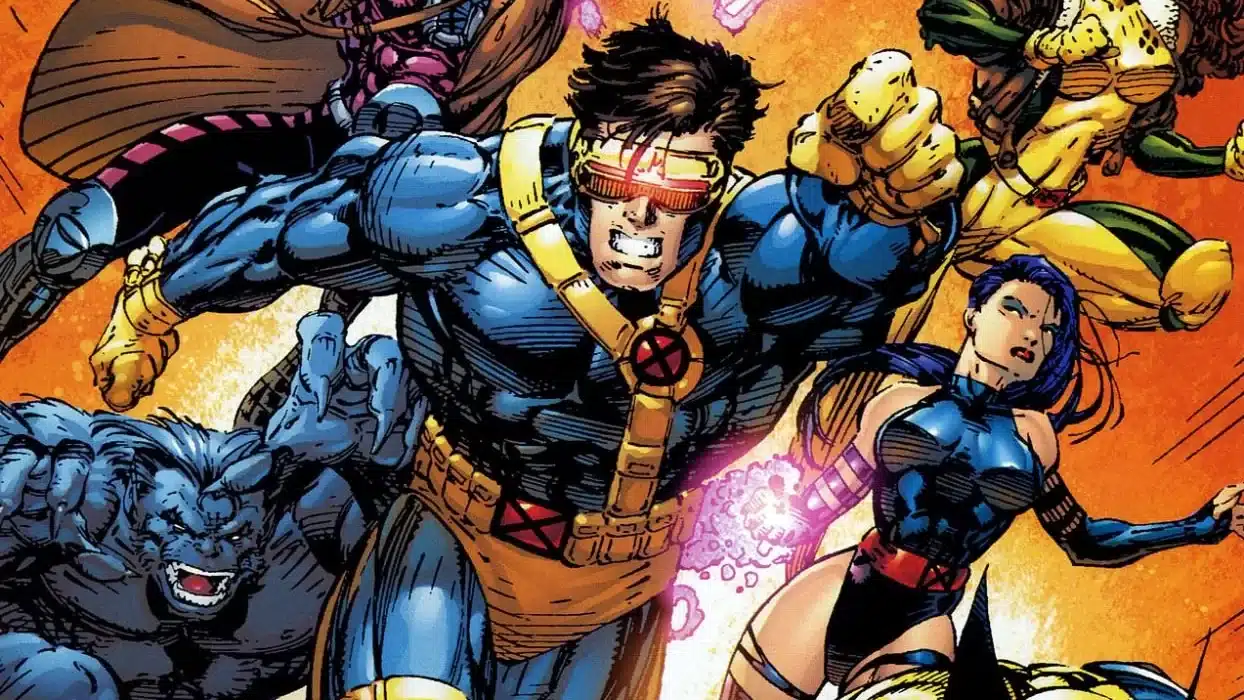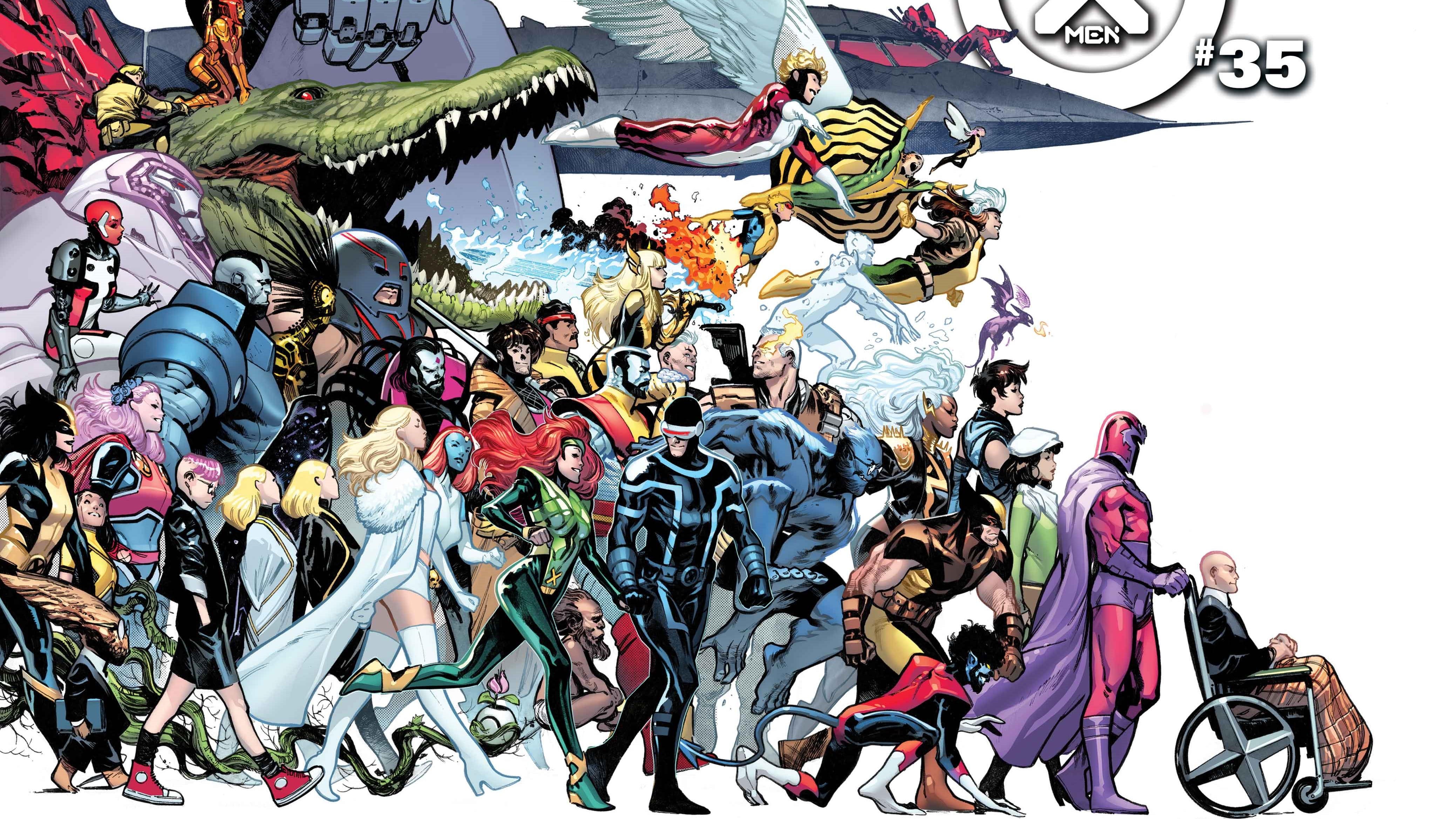We’re at a crossroads in the centuries-long generational war. Boomers, Zoomers, Millennials, and the oft-forgotten Generation X are at arms with one another, blaming each other for their lives’ many woes. I find myself in an interesting position amongst all this. Being born in the 1996-to-1999 liminal space between being classified as a Millennial or a Zoomer (a Mil-liminal, if you will), I’m privy to the struggles and desires of both generations. I’m aware of what cassette tapes and Kid Pix are, but I’m also up-to-date with the latest Tiktok trends and Youtube drama. In other words, I’m the exact kind of person that Joe Casey should’ve talked to before deciding to write All-America Comix #1.
Generation Z has an interesting relationship with All-America Comix #1, whether they know it or not. The one-shot, released in July of this year after several years of development, was written by Joe Casey, with art by Dustin Nguyen, colours by Brad Simpson, and lettering by Rus Wooton. Members of the Zth Generation have most likely interacted with Casey’s work before, as he, a member of the 4-man writer collective Man of Action Entertainment (Alongside Joe Kelly, Duncan Rouleau, and Steven T. Seagle) helped create staples of their childhoods, like Ben 10, Generator Rex, and Big Hero 6, as well as working on the Ultimate Spider-Man and Avengers Assemble ensemble of shows for Marvel. Joe Casey is a seasoned comics writer as well, with notable runs on Cable, Uncanny X-Men, and Superman. All this to say, writing All-America Comix is second nature to Casey, and moreover, writing a character that fits a demographic that he’s written for before should be a breeze, right?
The road towards All-America Comix #1 is a rocky one that starts with the 2011 Marvel miniseries Vengeance. Written by Casey and illustrated by Nick Dragotta, it introduced the Teen Brigade, and more importantly, America Chavez, otherwise known as Ms. America. The caveat with writing work-for-hire comics, and more specifically, creating new characters for major publishers, is that generally, you don’t own that character. The rights to that character are forfeited to the publisher once created, which is surely something that Casey would’ve known, having worked in the industry for over a decade before co-creating America Chavez with Dragotta. Thus, his input on the character is at Marvel’s discretion, which in this case began and ended with Vengeance.
There’s three ways to handle to handle losing your creations to the throes of corporate art: You either fight (and often fail) to get the rights to the character back, you cope and move on, or you take a page from the Liefeld playbook and strip the serial number off the IP and write your own pastiche. Casey chose the final option, and thus, All-America Comix was born. Gone was America Chavez, and from her ashes grew America Vasquez….to mixed results.
That’s All-America Comix’s first problem: for a comic that’s trying to make the reader forget about America Chavez, it does a godawful job at doing so. The project was announced in 2016, five years after Casey had last written Chavez. Speaking about Vasquez in an interview with The Hollywood Reporter earlier this year, Casey said:
“…what we’re delivering in our book is a character and a direction that we have complete control over. In other words, there’s a strong creative hand at work here. A definite vision being executed. It would appear to me that certain other characters, ones that you may or may not find at other publishers, have ended up, in one way or another, as “open-source” characters, where subsequent writers and artists seem to take their cues more from fandom’s wants and desires — or, God help us, their Tweets — rather than their own creative instincts. And that generally produces mixed results at best — see Marvel’s Origin miniseries from ’01-’02 for an example from back in the day.”
For those not in the know, the “subsequent writers” that Casey refers to here happen to be Kieron Gillen and Al Ewing, the two writers that had a significant creative impact on Chavez between the end of Vengeance and the announcement of All-America Comix #1. With Casey explaining later in the interview that the story hasn’t fundamentally changed in the past four years (aside from Vengeance artist Nick Dragotta being swapped out for Dustin Nguyen, and other small touches), it’s clear that this isn’t Joe Casey’s response to the 2017 America series written by Gabby Rivera and illustrated by Joe Quinones; this is Joe Casey’s response to Gillen and Ewing’s introduction of the Utopian Parallel, Chavez’s two mothers, her relationship to Lisa Halloran, and her contributions as a member of both the Young Avengers and the Ultimates. Casey spends the rest of the interview assuring the interviewer that he is Very Much Over It, and that America Vasquez is Very Much An Original Character. So would you believe that All-America Comix begins with Vasquez beating up a presumed stand-in for Chavez?
No really, the second and third pages of All-America Comix are dedicated to Vasquez, dressed in a costume similar to that which Chavez wore in Vengeance, sending the “imposter” back to the “horrible place” from whence she came. What follows is a page where Vasquez tells off the Avengers pastiches of the story, complete with an outdated reference to a female Thor, to assure us once again that Joe Casey is 100% Absolutely Over It.
For a book that’s so adamant about being Casey’s own original creative vision, it’s rife with stand-ins for the shared universe it’s trying to distance itself from. We also see Doctor Doom- no sorry, Imperator Doud-, Doctor Octopus, and the Ultimate Nullifier (Another Casey/Dragotta creation, not to be confused with the Deus Ex Machination of the same name) pop up throughout the story too, all shallow cameos that presume an understanding of the characters they reference in order to grasp their importance to the story.
The aforementioned issues aren’t the worst that All-America Comix has to offer, though. It’s the incredibly out-of-touch writing that fails to represent the generation that the main character belongs to. Having grown alongside the evolution of the internet, I, like many others, have grown weary of corporate attempts to try and be relatable and hip. I’ve seen corporations try to “Damn Daniel” their way into my pockets. I’ve suffered through Brand Twitter creating diss tracks to generate hype for their “never-frozen” patties. I have witnessed the circumstances that led to the Eldritch abomination that is the Planters Baby Nut. So, when I saw the faux Instagram post on the first page of A-AC, my fight-or-flight instinct was immediately launched into fifth gear.
Then I saw the hashtags.
The narration in All-America Comix is done through fake instagram captions, hashtags and all. Words cannot properly express the utter horror that I felt as I read through the hashtags, each very clearly written by someone who hadn’t ever talked to anyone born after 1999. The attempt at Zoomer vernacular fails incredibly hard in a story that centers around generational conflict.
Casey’s vision for a hero of the next generation is bland and monotonal, especially when you look at the progress that actual Zoomers are striving to achieve in the real world. Real Zoomers aren’t punching robots and saying “KA-BOOM, Kween!”, they’re mobilizing both in the streets and online to try and make the world a better place. Vasquez has no real motivations aside from being a teenage iconoclast. Not-Doctor Doom serves as the Generation X/Boomer stand-in, chastising Vasquez for her arrogance and entitlement. Admittedly, I shouldn’t have expected much nuance at all from someone who has spent roughly two decades making Saturday-morning cartoons, but it’s executed so poorly that it feels like parody. Casey barely delves into Vasquez’s identity as a member of the Latinx community either, as all we see is some brief familial strife and a throwaway caption about her grandfather. Aside from the writing, there really isn’t much else to be said about All-America Comix. Nguyen’s art offers some beautiful visuals throughout the story, especially with Simpson’s colours; however, it feels like Nguyen is punching under his weight. Wooton makes the best of the material he’s been given and offers some dynamic and emotive lettering, hashtags and all. The writing is the story’s biggest detriment, and it drags every other component of the book down with it.
America Vasquez isn’t a real Zoomer; she’s a middle-aged man’s ideal of an iconoclast that solves all her problems by being emotionally distant and punching through things like a 90s punk rocker. There’s a reason All-America Comix is behind us, because the future has better heroes to lead it.
Lan M
Lan M is a university student from Toronto whose last name probably wouldn’t fit within the character limit for this blurb. Between his bouts of existential dread and making videos, you can find him tweeting.





